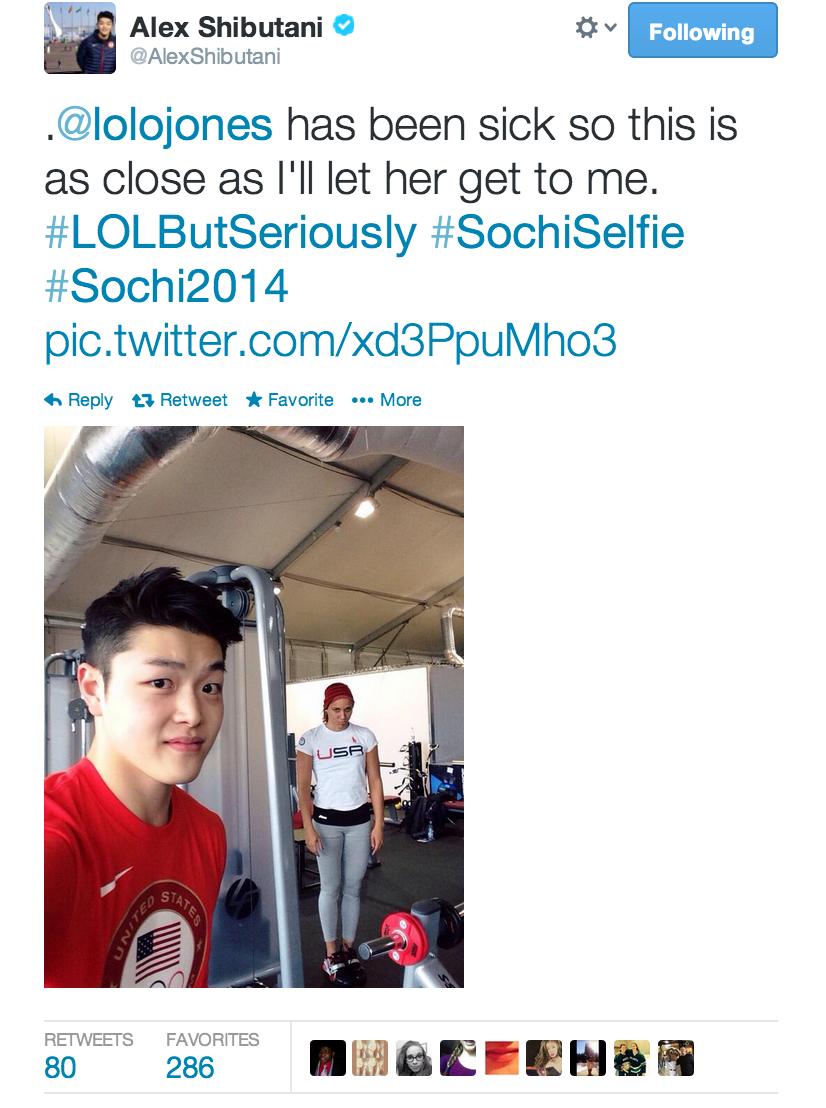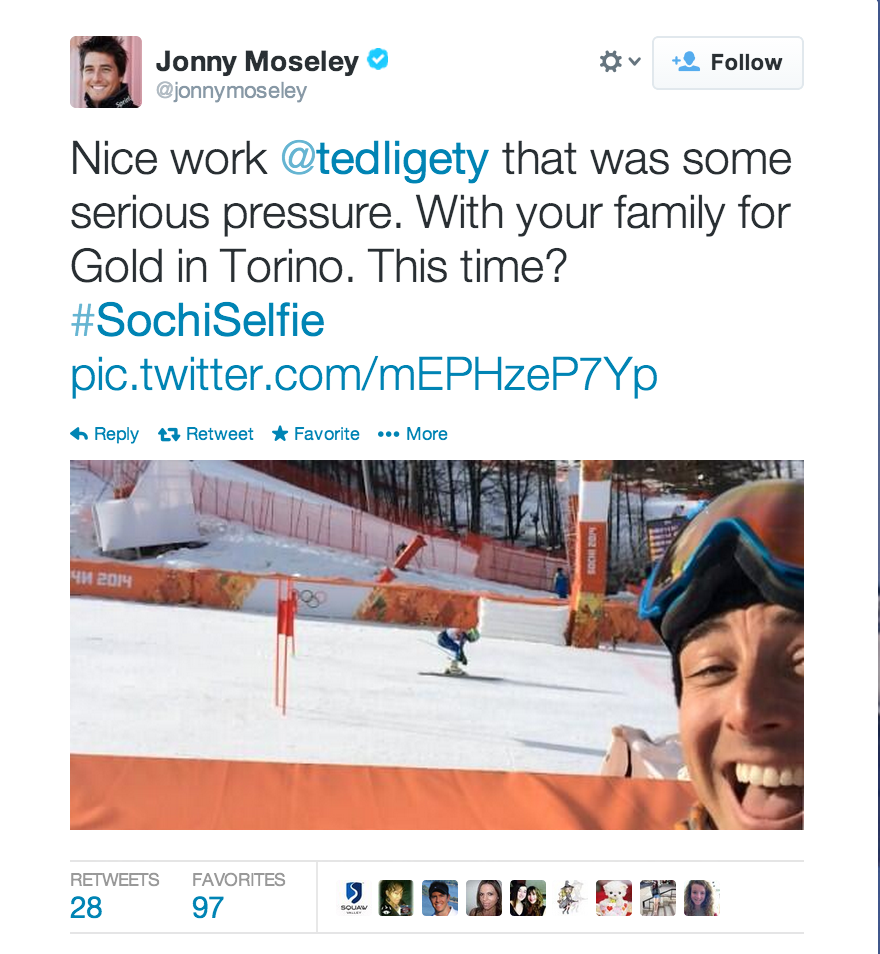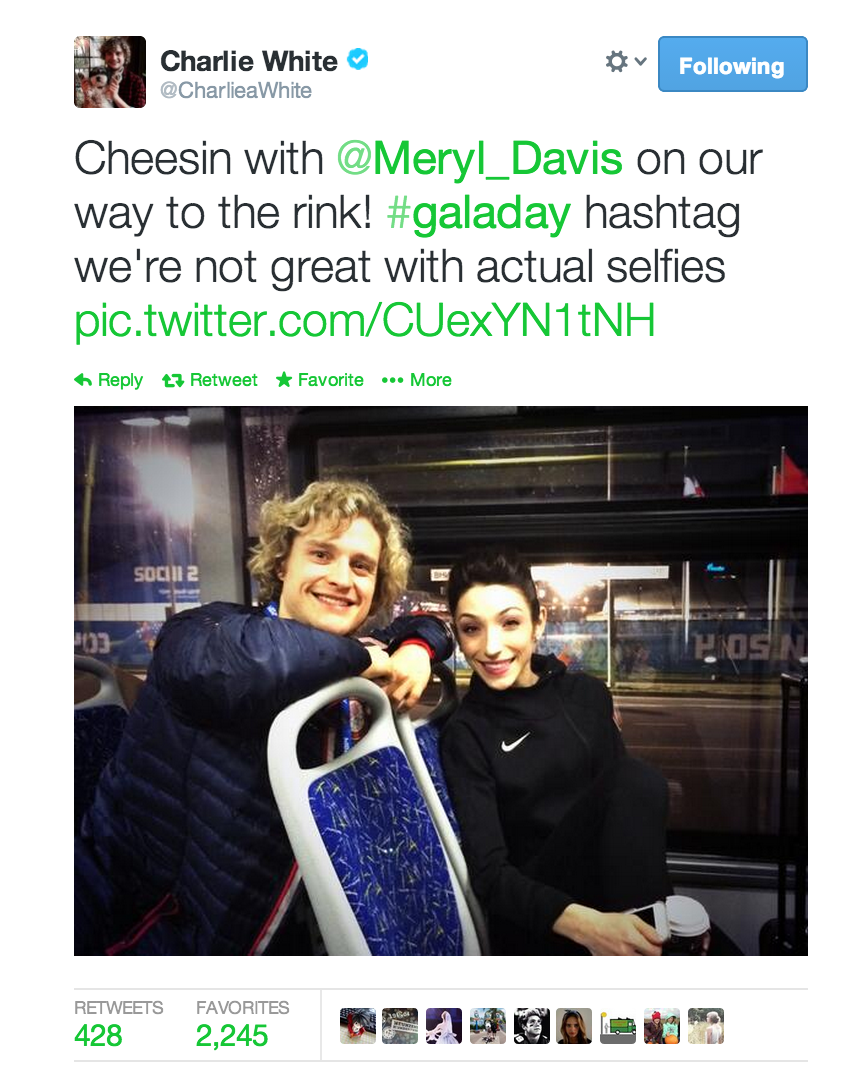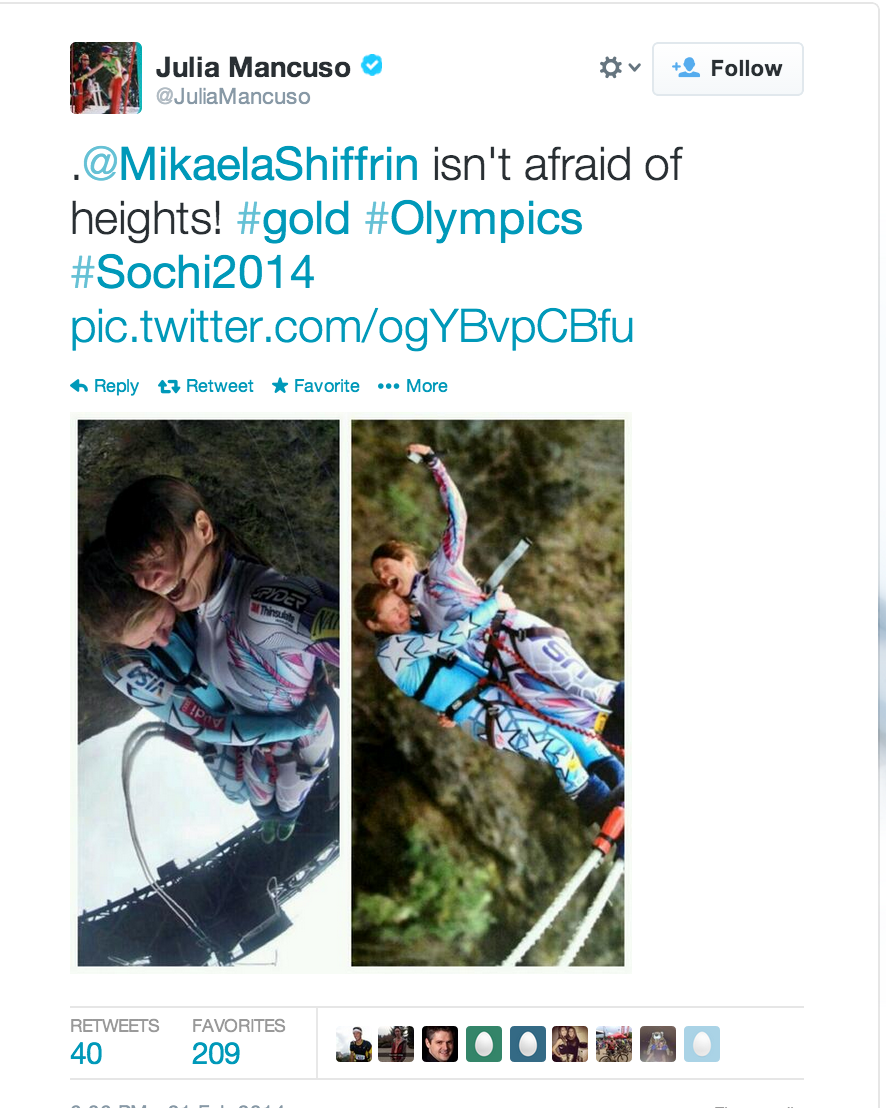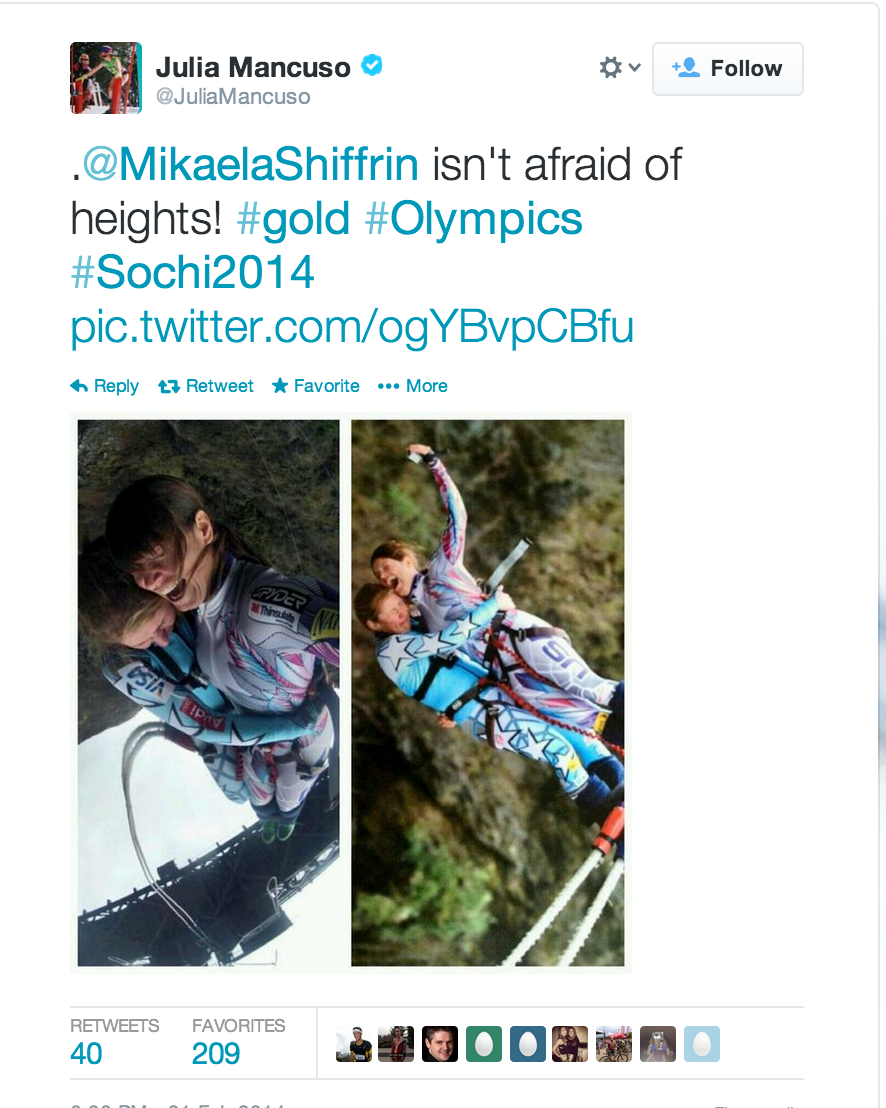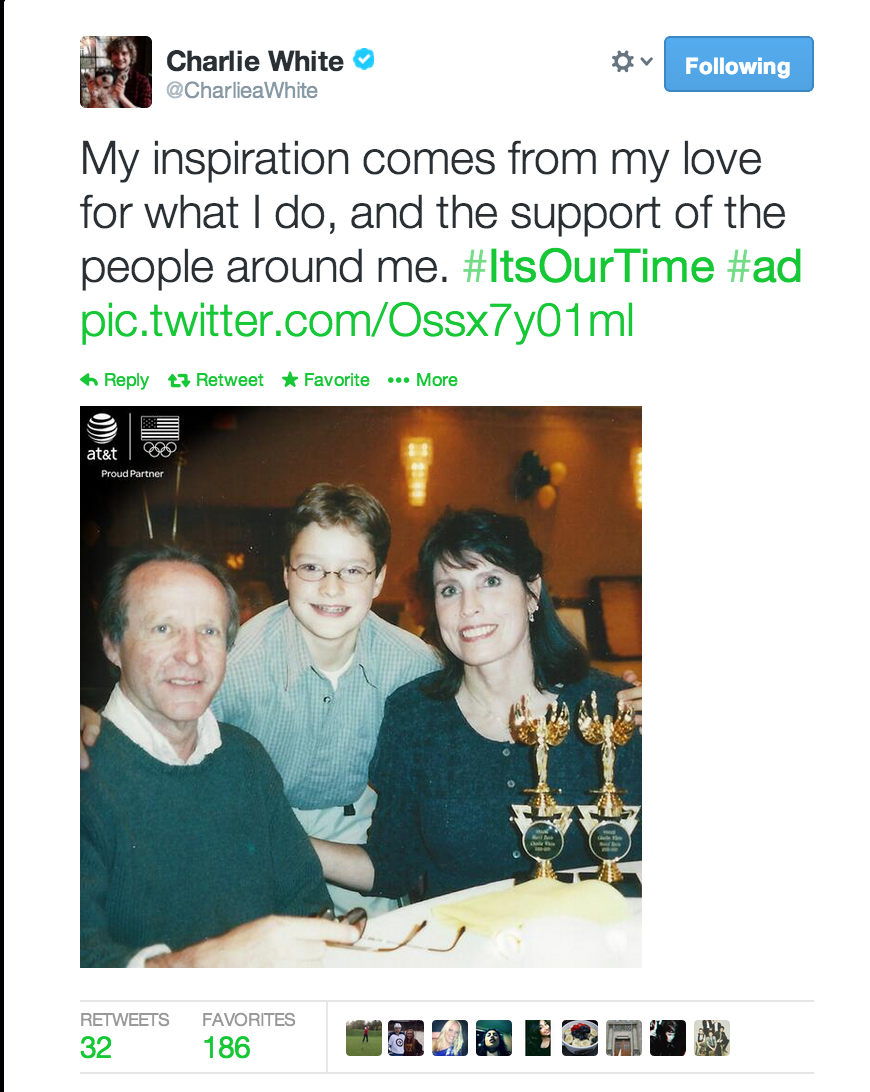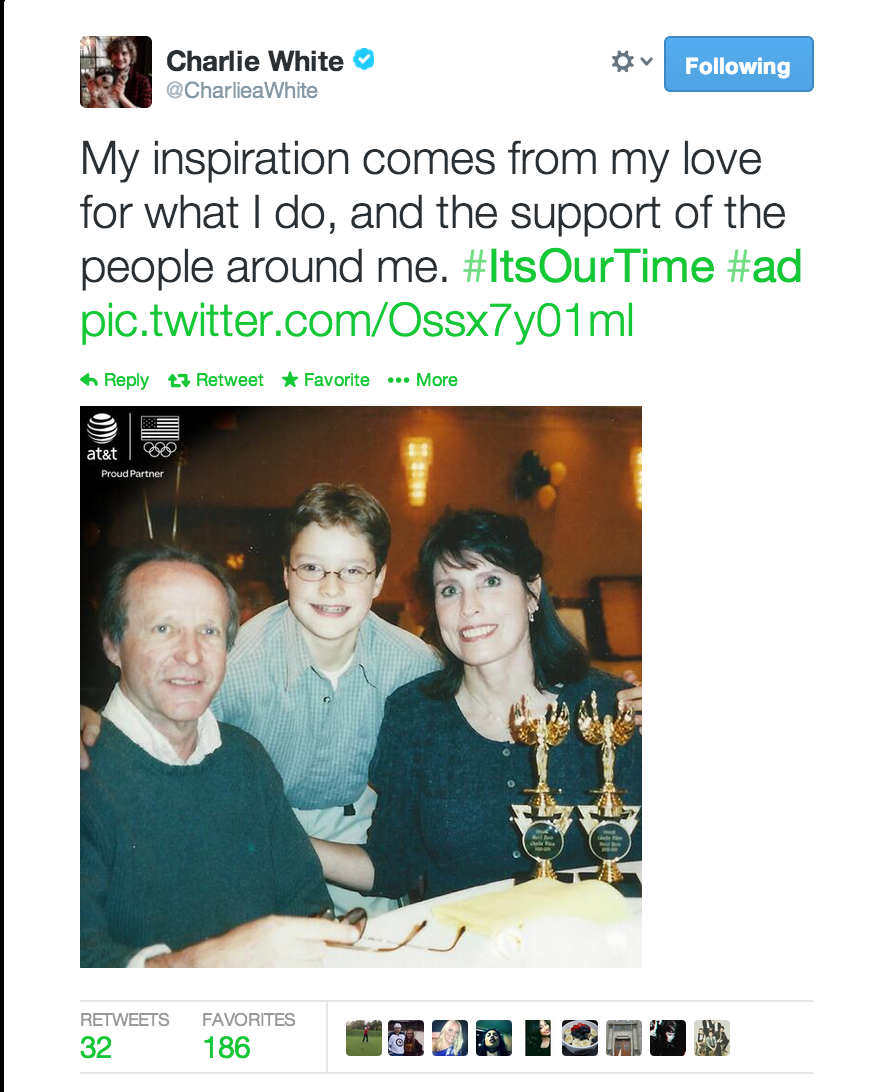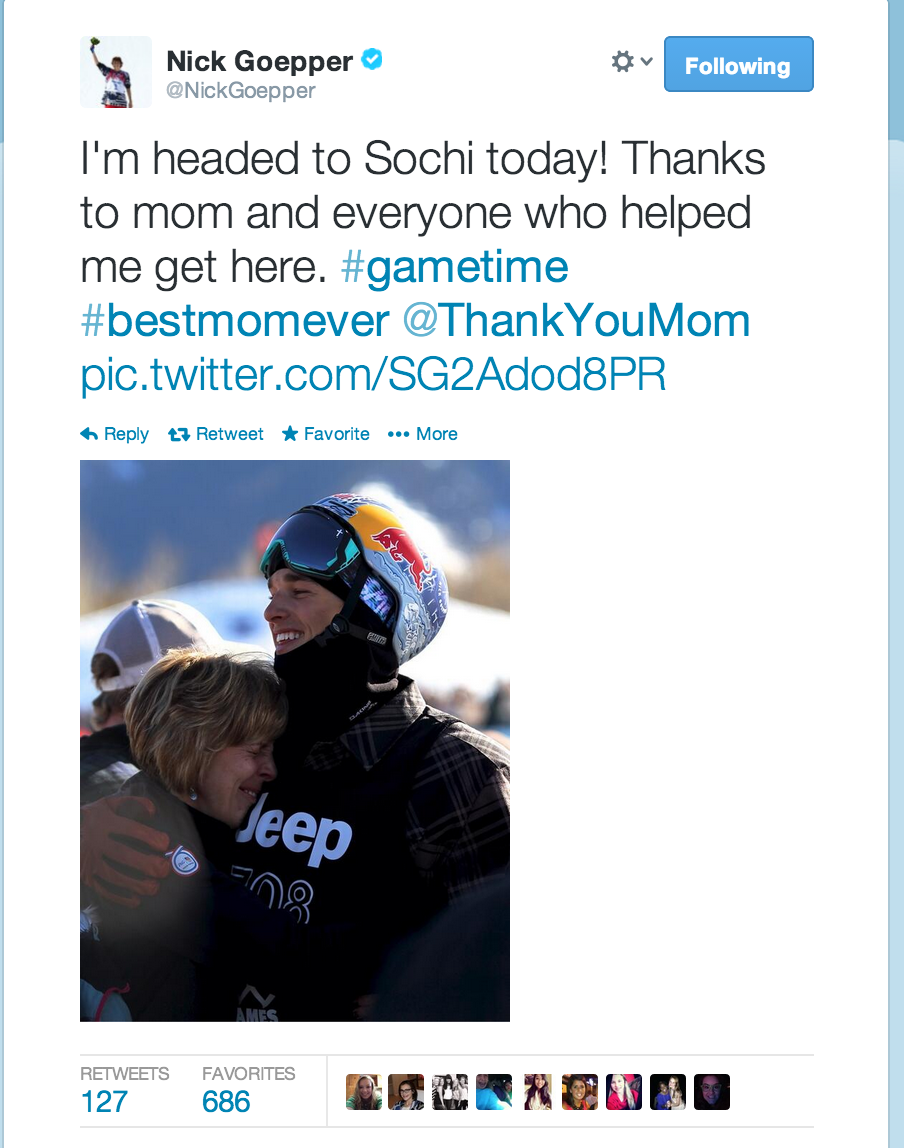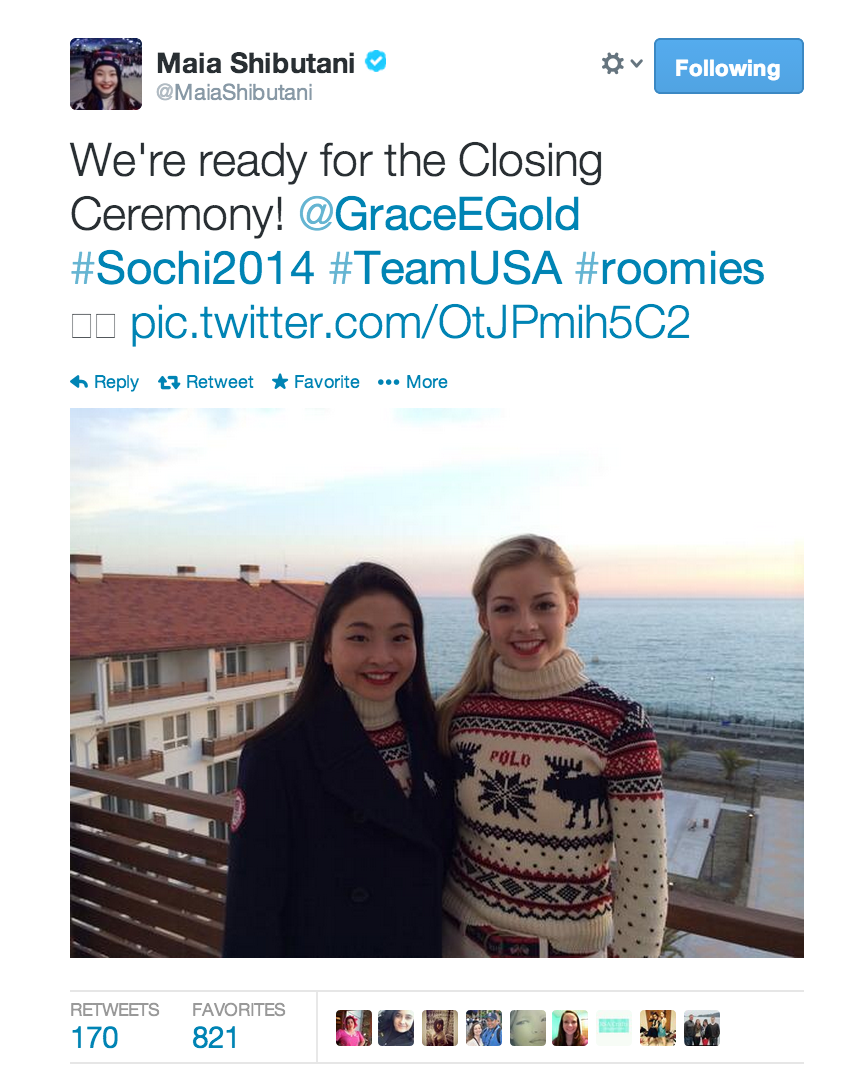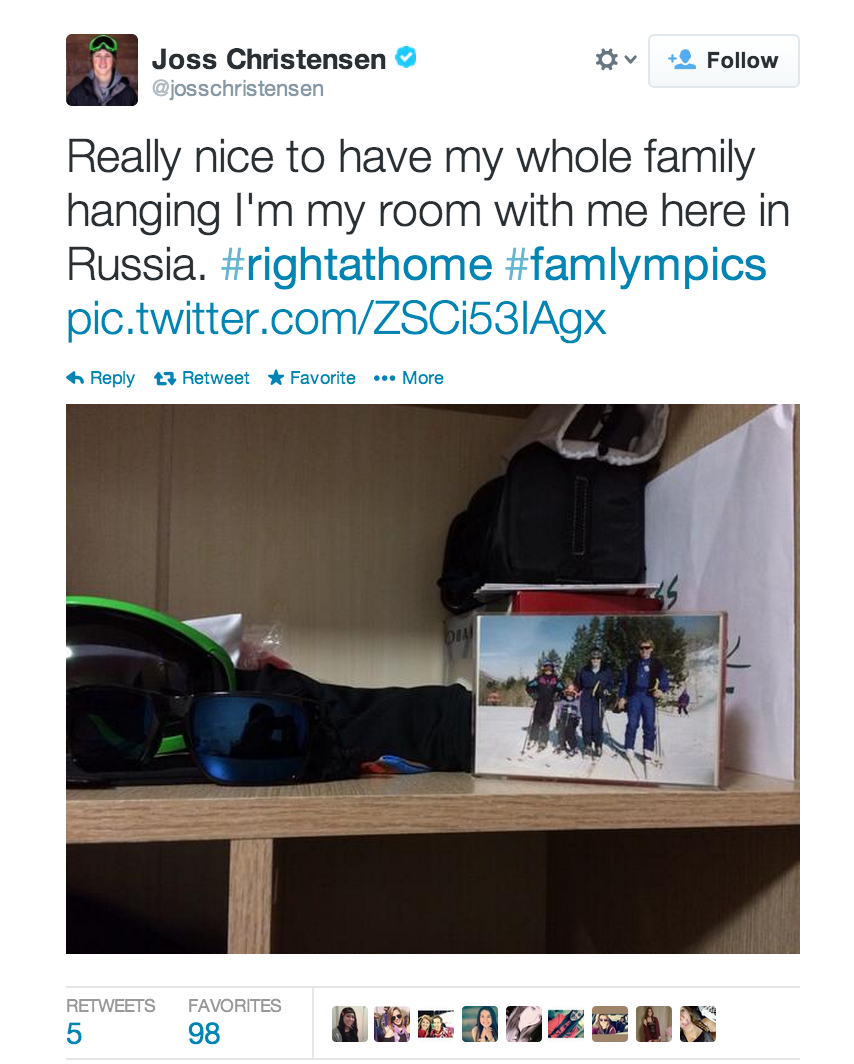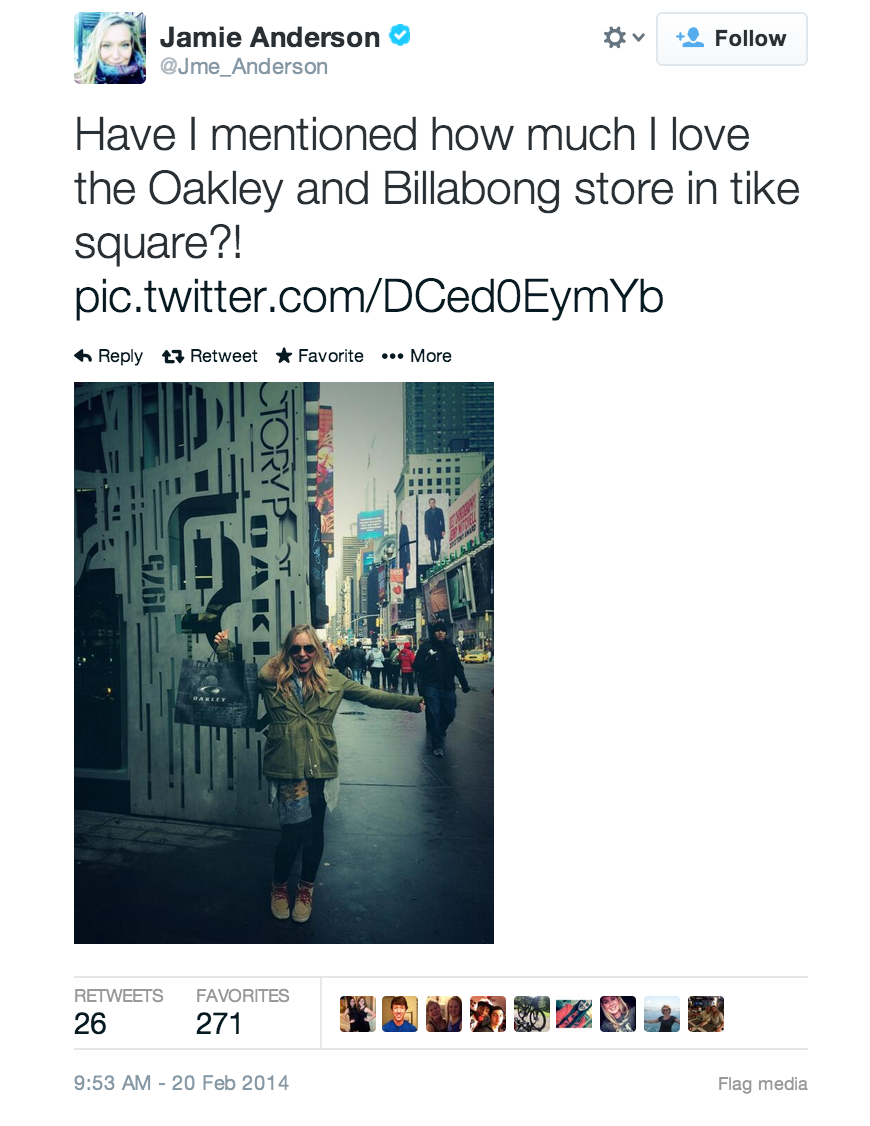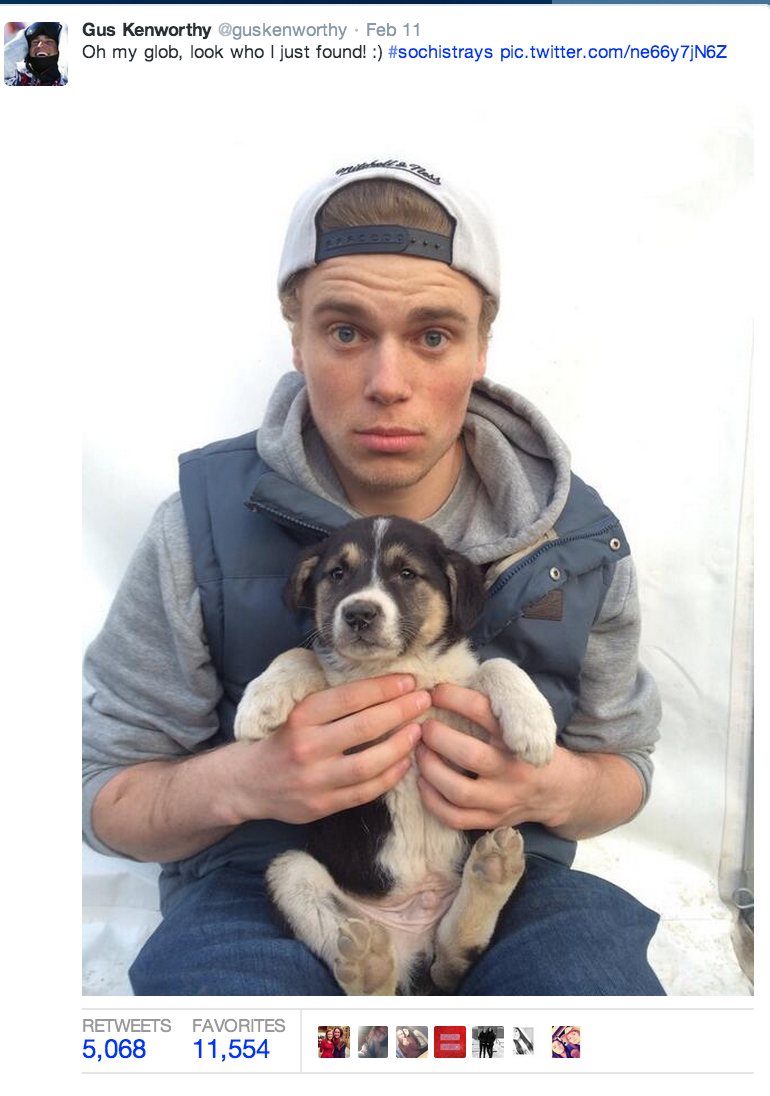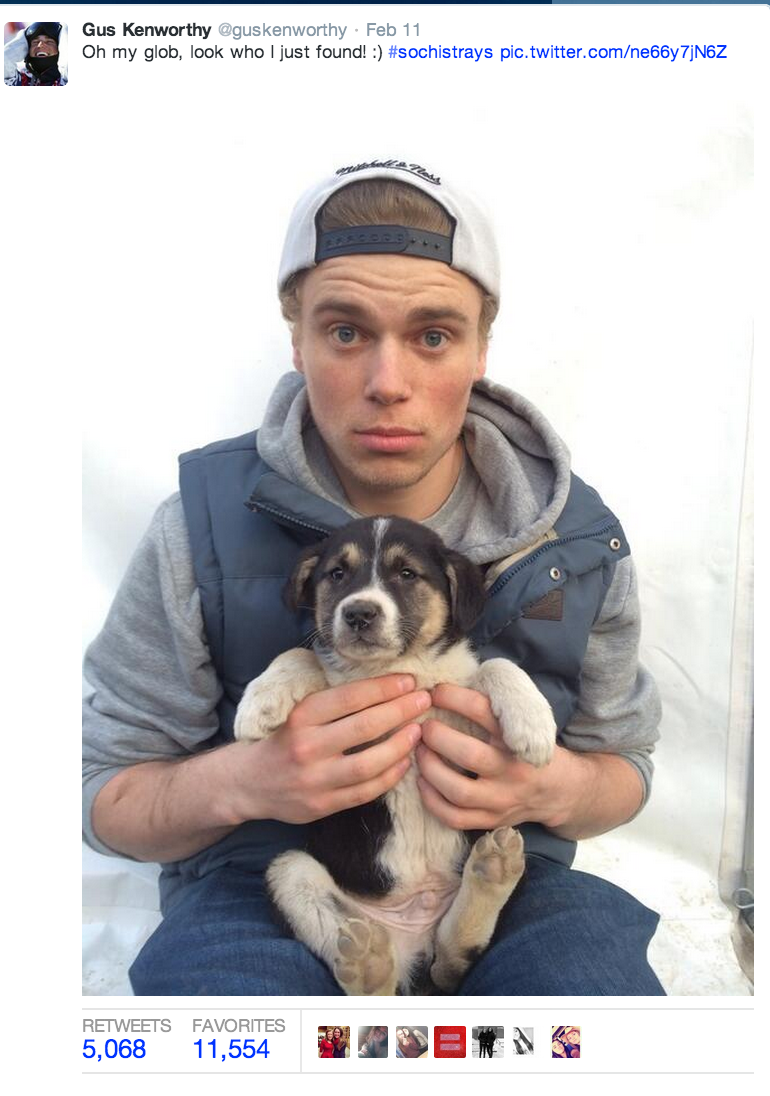Some people feel social media has “ruined” the Olympic experience. It is a bummer to see the spoilers on Twitter and Facebook when you are looking forward to the evening broadcast, but on the flip side, social media has given us inside access to the Olympic experience. The athletes, whose social media presence can play a large role in exposure and sponsorships, tweeted away while in Sochi. It was easy to feel like you were on a journey with them.
Personally, I love what social media has done for the Winter Games. I think the access to athletes helps propel the popularity of the Olympians and their sports forward. These sports don’t get the same exposure as the NBA, NFL, etc. year after year, and because of that, social media is an invaluable tool.
I was curious how much the exposure from the past couple weeks increased the Twitter presence of the athletes that competed in Sochi, so I took a look at the Twitter growth of 20 medalists from Team USA. Amazingly, every single athlete I looked up during my research had a viagrastoresa.com. I think it’s safe to say that winning an Olympic medal helps you win in social:
I don’t think the growth can be contributed to medals alone though. These athletes get Twitter, have fun with it and use the platform pretty consistently. So what can we learn from them? Below are my four takeaways from the Olympians of the 2014 Winter Games (yes, some of these are goofy):
Sometimes, you should ride pop culture wave.
I know we are all tired of selfies, but the #SochiSelfie trend was brilliant. Selfies are a pop culture phenomenon right now and something everyone can relate to. I think #SochiSelfie worked because the athletes did not take themselves too seriously, opting to show fans a humorous side while also giving a glimpse behind the scenes.
There’s a lesson here for all of us in the industry: If you can work a pop culture trend into your content or campaign without stretching the relevance, it can be a huge hit. Be careful though, efforts like this can also flop very quickly.
Access wins.
Social media is an opportunity to tell the off-screen story during a televised sporting event. What’s happening that fans are not seeing from the television broadcast? What different perspective or voice can the team or brand offer? These are the type of questions that need to be asked when covering a live event.
If you ever doubted the value of behind-the-scenes content, then take a look at everyone involved in the Winter Games from Team USA to NBC to the athletes themselves… you’ll see how valuable the access was in getting traction on their social media platforms.
Sponsor content can be done right.
Much of the sponsored content I saw during Sochi did not scream “selling”. In fact, most of the sponsored content I saw from athletes gave a behind-the-scenes look or personal perspective. Normally, the tweets came off genuine.
Good sponsored content should fit seamlessly into the overall story. Think about the widely successful #thankyoumom campaign: Moms are a natural piece of many Olympians journey, so the content fits perfectly into the conversation. The campaign feels natural and organic, just like all great sponsored content should.
You can never go wrong with puppies.
Puppies might have been the reason why Gus Kenworthy’s Twitter account increased 694 percent…. seriously, look at that traction. Puppies always win.
At the end of the day, the athletes won on social media because they were genuine. The ability to be interesting, relevant and conversational is something all teams and brands should take a note or two from.
0
